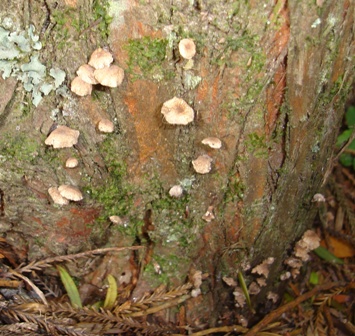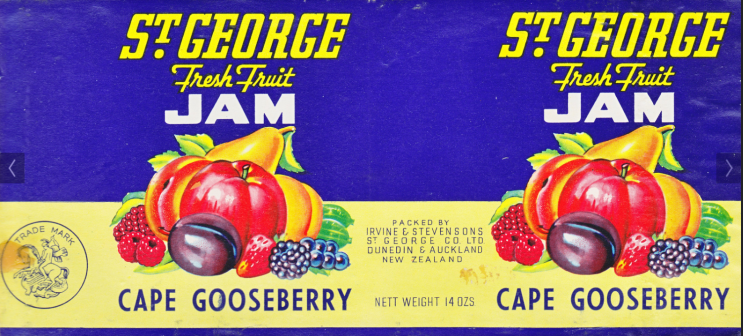![Greta Stevenson [Alexander Turnbull Library, National Library of New Zealand, Te Puna Matauranga o Aotearoa - C-17974]](https://sporesmouldsandfungi.files.wordpress.com/2014/04/greta-stevenson.jpg?w=740&h=464)
Greta Stevenson [Alexander Turnbull Library, National Library of New Zealand, Te Puna Matauranga o Aotearoa – C-17974]
In her biography, Kay McFarlane says that Greta went to Wellington in 1970 where she worked for ten years as an unpaid research officer in the Botany Department at Victoria University of Wellington. She also says that from 1980 to 1981 Greta worked at the University of Canterbury’s Botany Department where, while undertaking research, she conducted a number of workshops and study courses on larger fungi. This is not totally correct. In her obituary of Greta, Marie Taylor noted that “Her characteristic acerbic comment leaves us in no doubt of her position on controversial topics”. A falling out with the Botany Department in 1980 saw Greta move to the Geology department. In 1981 I attended an extension course on identifying larger fungi run by Greta at Victoria University. Greta used the notes she produced for this course for her book Field Guide to Fungi (1982) which was reprinted after her death as New Zealand Fungi: an Illustrated Guide (1994). Unfortunately, Greta fell out with the Geology Department which resulted in her move to Christchurch and then to England where she died in 1991.
In Greta’s 1964 paper she described a small mushroom collected at Butterfly Creek, on the western side of Wellington Harbour, as Marasmius curranii. It was described as growing on the bark of dead wood. The name did not conform to the rules of naming in Latin and was later corrected to Marasmius curraniae. It was not until 1997 that a fuller description would be written by Desjardin and Horak (1997). This description was based on new collections and noted that the mushrooms smelt of garlic and were found growing on the rotting bark of Leptospermum sp. or Metrosideros umbellate. Finally, Jerry Cooper reassigned it to the genus Mycetinis as Mycetinis curraniae (2012). Jerry also added an exotic conifer species, Cupressus macrocarpa, to the host list.
For the last five years, I have been observing a small mushroom growing on the bark of a living totara [Podocarpus totara] at Otari-Wilton’s Bush which I have been calling Micromphale sp. [garlic shanklet]. Jerry kindly identified it in a previous blog.
Desjardin, D.E.; Horak, E. 1997. Marasmius and Gloiocephala in the South Pacific Region: Papua New Guinea, New Caledonia, and New Zealand taxa. Bibliotheca Mycologica 168: 152 p.
McFarlane, K. Stevenson, Greta Barbara. From the Dictionary of New Zealand Biography. Te Ara – the Encyclopedia of New Zealand, updated 19 February 2014. http://www.TeAra.govt.nz/en/biographies/4s44/stevenson-greta-barbara
Stevenson, G. 1964. The Agaricales of New Zealand: V. Kew Bulletin 19: 1-59.
Stevenson, G. 1982. Field Guide to Fungi. University of Canterbury Publication No. 30.
Stevenson, G. 1994. New Zealand Fungi: an Illustrated Guide. Canterbury University Press.
Taylor, M. 1991. Greta B Stevenson Cone. New Zealand Botanical Society Newsletter 23: 7.
P.S. As a social history aside Greta’s father was managing director of the family’s food-processing company, Irvine and Stevenson’s St George, in Dunedin. I remember St Georges jam as a child. The company ceased production in the early 1970s.



[…] of two other collections of smoker’s-lung milkcap from Wellington city. These where identified by Greta Stevenson from the Botanic Garden in April 1979 and from Kelburn Park in May […]
[…] The lindens are immediately adjacent to the southern live oaks. These trees are of interest because Greta Stevenson wrote of finding a flush of Russula pectinata under these trees in April 1978. Jerry Cooper has […]